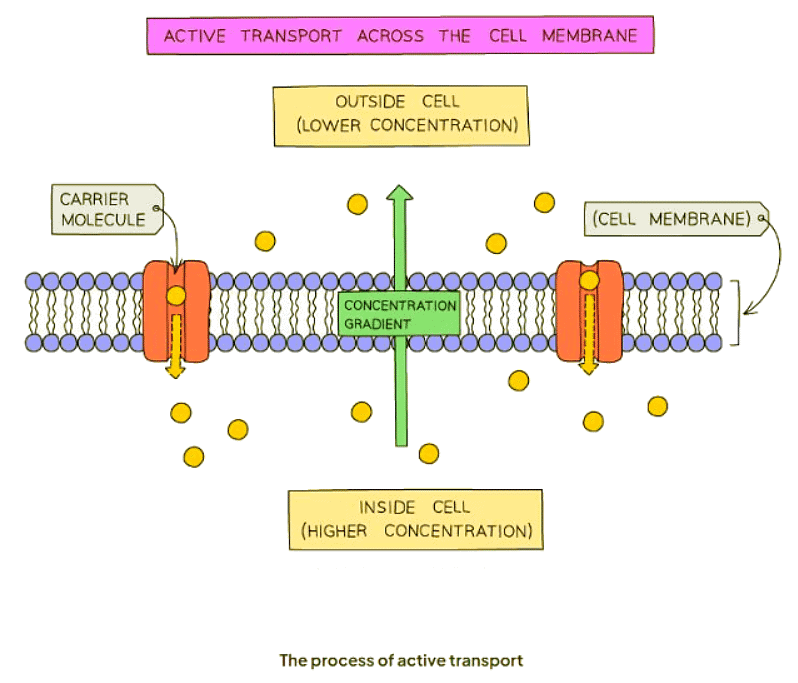Class 10 Exam > Class 10 Notes > Biology for GCSE/IGCSE > Active Transport
Active Transport | Biology for GCSE/IGCSE - Class 10 PDF Download
Active Transport
- Active transport involves the movement of particles across a cell membrane from an area of lower concentration to an area of higher concentration, requiring energy from cellular respiration.
- Active transport is characterized by the movement of substances against their concentration gradient, which differs from passive transport processes like diffusion and osmosis.
- This process is vital for the uptake of essential nutrients by cells, even when the concentration of these substances is higher inside the cell compared to the external environment.
- An example of active transport is the sodium-potassium pump in animal cells, which actively transports sodium out of the cell and potassium into the cell to maintain the cell's electrochemical gradient.

Question for Active TransportTry yourself: Which process involves the movement of particles across a cell membrane from an area of lower concentration to an area of higher concentration?View Solution
The document Active Transport | Biology for GCSE/IGCSE - Class 10 is a part of the Class 10 Course Biology for GCSE/IGCSE.
All you need of Class 10 at this link: Class 10
|
110 videos|210 docs|33 tests
|
FAQs on Active Transport - Biology for GCSE/IGCSE - Class 10
| 1. What is active transport? |  |
Ans. Active transport is the movement of molecules across a cell membrane from a region of lower concentration to a region of higher concentration, using energy from ATP.
| 2. How is active transport different from passive transport? |  |
Ans. Active transport requires energy input, usually in the form of ATP, to move molecules against their concentration gradient, while passive transport does not require energy and moves molecules down their concentration gradient.
| 3. What are some examples of active transport in cells? |  |
Ans. Examples of active transport in cells include the sodium-potassium pump, which maintains the cell's membrane potential, and endocytosis, which is the process of bringing large molecules into the cell.
| 4. How does active transport help cells maintain homeostasis? |  |
Ans. Active transport helps cells maintain homeostasis by regulating the concentration of ions and molecules inside and outside the cell, ensuring that essential nutrients are taken up and waste products are removed.
| 5. What role does active transport play in nerve cell function? |  |
Ans. Active transport, such as the sodium-potassium pump, helps establish and maintain the resting membrane potential of nerve cells, which is essential for transmitting electrical impulses and nerve cell communication.
Related Searches
















